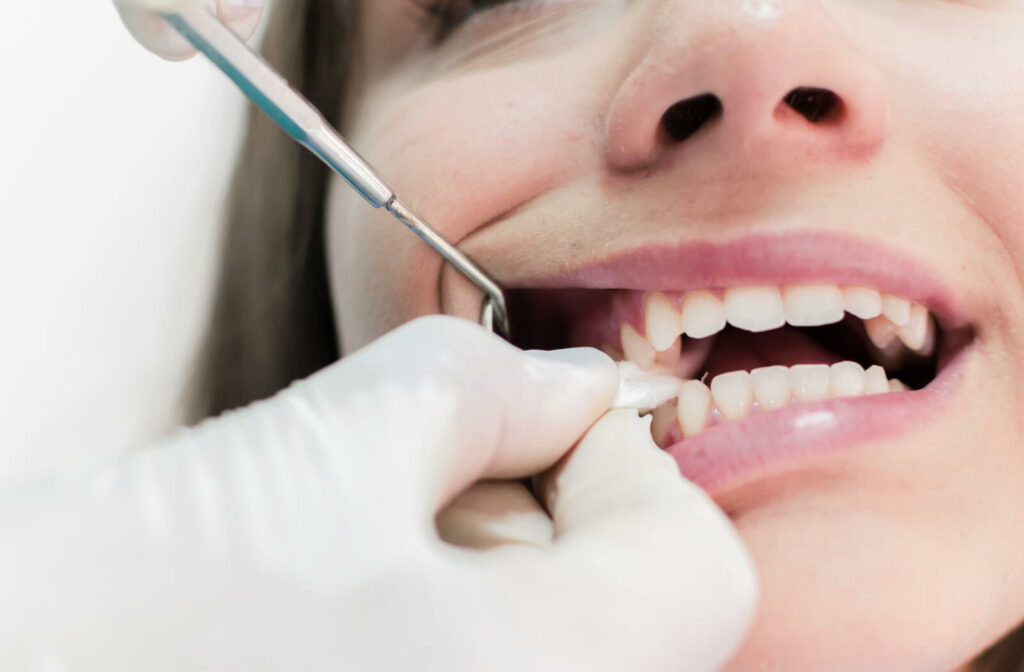Gauze Patrol: Mastering the Art of Post-Extraction Care
Tooth extraction, while a routine procedure, requires dedicated aftercare to ensure a smooth recovery. One of the initial steps involves using gauze to control bleeding at the extraction site. This guide delves into the crucial details of how long to keep gauze in after tooth extraction and equips you with essential post-operative knowledge.
The Power of the Blood Clot: Nature’s Healing Mechanism
Following a tooth extraction, a natural blood clot forms in the socket where the tooth resided. This clot plays a vital role in several ways:
- Stops Bleeding: The clot acts as a plug, sealing the extraction site and preventing further blood loss.
- Promotes Healing: The clot serves as a scaffold for new tissue growth, facilitating the healing of the bone and gum tissue.
- Reduces Pain: A healthy clot minimizes discomfort by providing a protective layer over the exposed nerves and bone.
Gauze: A Temporary Guardian
Gauze is a sterile pad placed on the extraction site immediately after surgery to absorb initial bleeding and help form the blood clot. However, keeping gauze in for an extended period can hinder healing. Here’s how to strike the right balance:
Initial Application:
- Your dentist will place gauze on the extraction site and instruct you to bite down gently with firm pressure for 30-45 minutes.
- This firm pressure helps form the blood clot.
Monitoring and Removal:
- After the initial 30-45 minutes, remove the gauze carefully.
- Expect some blood on the gauze, which is normal.
- Inspect the extraction site. If there’s minimal bleeding, you don’t need to replace the gauze.
Gauze Replacement:
- If you experience persistent bleeding, replace the gauze with a fresh piece and apply gentle pressure for another 30 minutes.
- Repeat gauze changes as needed, but no more frequently than every 30 minutes.
The Gauze Farewell:
- Generally, you won’t need gauze for more than 1-2 hours after surgery.
- Once the bleeding has subsided to a slight ooze, discontinue gauze use.
Factors Influencing Gauze Duration:
- Complexity of Extraction: Simple extractions usually require less gauze time compared to complex procedures involving wisdom teeth or impacted teeth.
- Individual Healing Rate: Healing varies from person to person. Some may need gauze for a slightly longer duration.
Always prioritize your dentist’s instructions. They will tailor post-operative care, including gauze usage, based on your specific case.
Beyond Gauze: Essential Post-Extraction Care Tips
- Maintain Oral Hygiene: Gently brush your teeth outside the extraction site, taking care not to irritate the area.
- Ice Therapy: Apply ice packs on the outside of your face during the first 24-48 hours to reduce swelling and pain.
- Medications: Take prescribed pain medication as directed by your dentist.
- Soft Diet: Stick to soft foods like mashed potatoes, yogurt, and applesauce for the first few days after surgery.
- Rest: Get plenty of rest to allow your body to heal.
- Follow Up Appointment: Attend all follow-up appointments with your dentist to monitor healing and address any concerns.
Avoid these Activities to Promote Healing:
- Strenuous Activity: Intense exercise can dislodge the blood clot.
- Smoking and Tobacco Use: Smoking hinders healing and increases the risk of infection.
- Vigorous Rinsing and Spitting: Harsh rinsing can dislodge the clot.
- Hot Liquids and Food: Extreme heat can irritate the extraction site.
- Carbonated Beverages: The fizz can irritate the extraction site.
- Alcohol Consumption: Alcohol hinders clotting and increases the risk of bleeding.
- Chewing Hard or Crunchy Foods: These foods put pressure on the extraction site.
- Picking at the Extraction Site: Avoid touching or poking the area with your fingers or tongue.
- Blowing Your Nose: The forceful action can dislodge the clot.
Frequently Asked Questions (FAQ)
Q: How long should I keep the gauze in after tooth extraction?
A: Generally, you’ll only need gauze for 1-2 hours after surgery, or until the bleeding subsides to a slight ooze. Always follow your dentist’s specific instructions.
Q: What if the bleeding won’t stop after removing the gauze?
A: If you experience persistent bleeding after removing the gauze, contact your dentist immediately. They can assess the situation and provide appropriate treatment.
Signs and Symptoms of Dry Socket: Recognizing a Potential Complication
While following proper aftercare minimizes the risk, dry socket can sometimes develop as a complication after tooth extraction. Here’s what to watch out for:
- Intensified Pain: Several days after the extraction, the pain may worsen instead of subsiding. This throbbing pain can radiate to the ear, jaw, or temple.
- Unpleasant Odor: A foul odor or bad breath can emanate from the extraction site.
- Visible Bone: In some cases, the blood clot may dislodge, exposing the underlying bone in the socket. This can be visible upon inspection.
- Swollen Gum Tissue: The gum tissue surrounding the extraction site may become swollen and inflamed.
- Difficulty with Taste: Altered taste perception can occur, particularly a metallic taste.
If you experience any of these signs or suspect a dry socket, contact your dentist immediately. Early diagnosis and treatment are crucial for a speedy recovery and minimizing discomfort.
The Takeaway: Knowledge is Power
Tooth extraction recovery requires a delicate balance between promoting healing and preventing complications. Understanding how long to keep gauze in after tooth extraction and following your dentist’s instructions are crucial steps in this process. By prioritizing good oral hygiene, maintaining a soft diet, and getting adequate rest, you can facilitate a smooth and comfortable recovery. Remember, if you have any concerns or experience unusual symptoms, don’t hesitate to reach out to your dentist.

